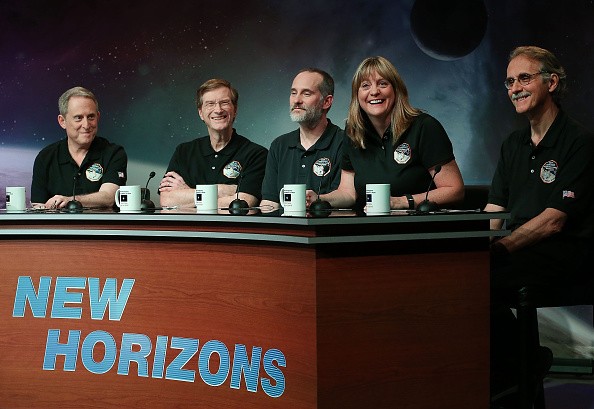NASA's spacecraft New Horizons may make a flyby to an object present in the Kuiper belt, dubbed 2014 MU69. The spacecraft is waiting for NASA's permission to do the flyby, which will require an additional stay in the space.
In July 2015, NASA's spacecraft New Horizons made a Pluto flyby. The mission was considered highly successful as the astronomers were able to have a closer look at the Plutonian features and understand the dwarf planet in a better way.
New Horizon's mission to the mysterious object at the end of the solar system is expected to receive funding from the American space agency. Even though the researchers do not know about MU69 much yet, they believe that it might hold clues about the conditions that existed at the time of the formation of the solar system.
MU69 is known to orbit more than a billion miles beyond Pluto. The researchers, particularly selected MU69 to make a flyby beacause of the fact that the Kuiper belt has remained undisturbed since the time when the solar system was formed.
The Kuiper Belt object (KBO) was first selected as the next flyby target by the New Horizons team in August 2015. The team sent a proposal to the agency to fund the KBO mission, which was scheduled to be evaluated by a team of independent experts before NASA provides its approval.
"2014 MU69 is a great choice because it is just the kind of ancient KBO, formed where it orbits now, that the Decadal Survey desired us to fly by," New Horizons Principal Investigator Alan Stern said in a NASA press statement. "Moreover, this KBO costs less fuel to reach, leaving more fuel for the flyby, for ancillary science, and greater fuel reserves to protect against the unforeseen."
MU69 has been under the scanner of The Hubble Space Telescope for quite sometime now. Although the space telescope has clicked a number of pictures of the classical cold object in the Kuiper's belt, the researchers are not sure whether MU69 has a moon of it's own or not.
Simon Porter of the New Horizons mission believes that there is a possibility for MU69 to have a moon of its own - big or small, or it may even have many satellites, mainenewsonline has learned. Porter based his idea on the fact that nearly 30 percent of such big cold classical objects have a moon.
The following video is a documentary on New Horizon's Pluto flyby mission:



























